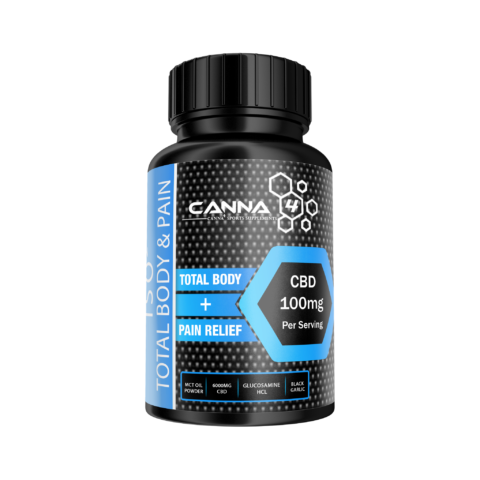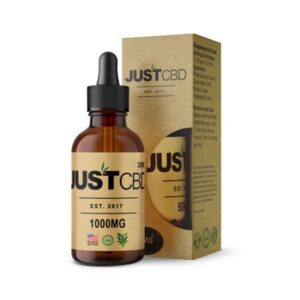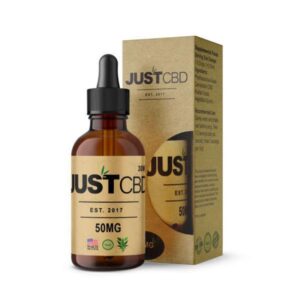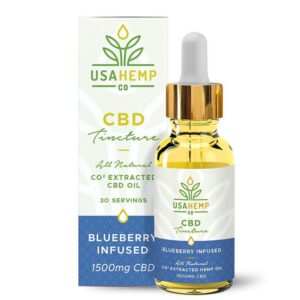Description
ISO2 HEMP FLOWER TOTAL BODY AND PAIN CAPSULE
Conforms To WADA-ZERO THC
- Pure Hemp Flower Extract
- MCT Oil Powder
- Black Garlic Extract
- Glucosamine
- MCT Oil Powder
BLACK GARLIC EXTRACT BENEFITS:
Based on studies (Here):
BACKGROUND/OBJECTIVES
The mechanism of how black garlic effects lipid metabolism remains unsolved. Therefore, the objectives of this study were to determine the effects of black garlic on lipid profiles and the expression of related genes in rats fed a high fat diet.
MATERIALS/METHODS
Thirty-two male Sqrague-Dawley rats aged 4 weeks were randomly divided into four groups (n=8) and fed the following diets for 5 weeks: normal food diet, (NF); a high-fat diet (HF); and a high-fat diet 0.5% or 1.5% black garlic extract (HFBG0.5 or HFBG1.5). Body weights and blood biochemical parameters, including lipid profiles, and expressions of genes related to lipid metabolism were determined.
RESULTS
Significant differences were observed in the final weights between the HFBG1.5 and HF groups. All blood biochemical parameters measured in the HFBG1.5 group showed significantly lower values than those in the HF group. Significant improvements of the plasama lipid profiles as well as fecal excretions of total lipids and triglyceride (TG) were also observed in the HFBG1.5 group, when compared to the HF diet group. There were significant differences in the levels of mRNA of sterol regulatory element binding protein-1c (SREBP-1c), acetyl-CoA carboxylase (ACC), fatty acid synthase (FAS), and glucose-6-phosphate dehydrogenase (G6PDH) in the HFBG1.5 group compared to the HF group. In addition, the hepatic expression of (HMG-CoA) reductase and Acyl-CoA cholesterol acyltransferase (ACAT) mRNA was also significantly lower than the HF group.
CONCLUSIONS
Consumption of black garlic extract lowers SREBP-1C mRNA expression, which causes downregulation of lipid and cholestrol metahbolism. As a result, the blood levels of total lipids, TG, and cholesterol were decreased.
MCT OIL POWDER
Medium-chain triglycerides are advantageous in promoting weight loss although not beneficial to exercise performance.
Medium-chain triglycerides (MCT) are triglycerides with a fatty acid chain length varying between 6 and 10 carbon atoms. MCT differ from long-chain triglycerides as they are relatively soluble in water and, hence, rapidly hydrolysed and absorbed. MCT are transported in the blood through the portal system, consequently they bypass adipose tissue that makes them less susceptible to hormone-sensitive lipase and deposition into adipose tissue stores. Due to these properties, MCT have been researched for both benefits to exercise performance and health. The present review aims to assess whether MCT are beneficial in either of these situations. MCT have been proposed as a means to maximizing an athlete’s ability to maintain their glycogen stores so they can be more competitive. …From a health perspective, MCT increase fat oxidation and energy expenditure as well as reduce food intake and beneficially alter body composition. Results indicate that MCT feeding is ineffective in improving exercise performance and future work should focus on the health benefits and applications of MCT.
CBD
Cannabinoids in the management of difficult to treat Inflammation and Pain
Cannabinoids are a group of compounds that mediate their effects through cannabinoid receptors. The discovery of Δ9-tetrahydrocannabinol (THC) as the major psychoactive principle in marijuana, as well as the identification of cannabinoid receptors and their endogenous ligands, has led to a significant growth in research aimed at understanding the physiological functions of cannabinoids. Cannabinoid receptors include CB1, which is predominantly expressed in the brain, and CB2, which is primarily found on the cells of the immune system. The fact that both CB1 and CB2 receptors have been found on immune cells suggests that cannabinoids play an important role in the regulation of the immune system.
CANNABINOIDS & RA
Rheumatoid arthritis is a chronic inflammatory disease that affects approximately 1% of the human population and is manifested in joint destruction, deformity and loss of function associated with joint stiffness, pain, swelling and tenderness . The major immune cell populations involved in joint injury are macrophages, T cells, fibroblast-like synoviocytes and DCs. Major cytokines are TNF-α and IL-1. Cannabinoids and their anti-inflammatory properties have been studied in animal models of RA and on human cells from RA patients and these studies demonstrate the anti-arthritic properties of these natural plant compounds. Interestingly, most of the studies on RA and cannabinoids focus on the use of nonpsychoactive cannabinoids.
CBD is the major nonpsychoactive component of the cannabis plant and its protective effect has been shown in murine collagen-induced arthritis. In this study, the authors showed that daily oral (5 mg/kg) or intra-peritoneal (25 mg/kg) administration of CBD inhibited disease progression. Furthermore, the study demonstrated that CBD-treated mice had less proliferation in ex vivo-activated draining lymph node cells, decreased levels of IFN-γ secreted by the activated lymph node cells and diminished TNF-α production by knee synovial cells. Sumariwalla et al. used another synthetic nonpsychoactive cannabinoid, HU-320, and demonstrated that this compound improved already established arthritis in mice, Lymph node cells from HU-320-treated mice showed decreased proliferative responses when the cells from 7-day post-inflammation mice were incubated with collagen II.
CANNABINOIDS & CANCERS WITH INFLAMMATORY COMPONENTS
The role of inflammation in evolution of certain types of cancer has been strongly suggested, linking the inflammatory response to 15–20% of all deaths from cancer worldwide. The hallmarks of cancer-related inflammation include the presence of inflammatory cells in tumor tissue, and the regulation of tumor growth, metastasis and angiogenesis by inflammatory mediators (e.g., chemokines, cytokines and prostaglandins). The connection between inflammation and cancer is now generally accepted and nonsteroidal anti-inflammatory drugs have been shown to reduce varied cancer risk. Use of these drugs reduces colon cancer risk by 40–50% and is indicated to be preventative for lung, esophagus and stomach cancer Hence, inflammation can be considered as a therapeutic opportunity in certain types of cancer. Recent applications of cannabinoids have been extended as antitumor agents, which relies on their ability to inhibit tumor angiogenesis or induce direct apoptosis or cell cycle arrest in neoplastic cells. A focus on the antiproliferative effects of these compounds in various tumors, such as breast and prostate cancers, pheochromocytoma and malignant gliomas, has been proposed.
-
Cannabinoids, the active components of Cannabis sativa, and endogenous cannabinoids mediate their effects through activation of specific cannabinoid receptors known as cannabinoid receptor 1 and 2 (CB1 and CB2).
-
The cannabinoid system has been shown both in vivo and in vitro to be involved in regulating the immune system through its immunomodulatory properties.
-
Cannabinoids suppress inflammatory response and subsequently attenuate disease symptoms. This property of cannabinoids is mediated through multiple pathways such as induction of apoptosis in activated immune cells, suppression of cytokines and chemokines at inflammatory sites and upregulation of FoxP3 regulatory T cells.
-
Cannabinoids have been tested in several experimental models of autoimmune disorders such as multiple sclerosis, rheumatoid arthritis, colitis and hepatitis and have been shown to protect the host from the pathogenesis through induction of multiple anti-inflammatory pathways.
-
Cannabinoids may also be beneficial in certain types of cancers that are triggered by chronic inflammation. In such instances, cannabinoids can either directly inhibit tumor growth or suppress inflammation and tumor angiogenesis.
Glucosamine hydrochloride for the treatment of osteoarthritis symptoms
One complementary medication that has been investigated for the treatment of OA is glucosamine. Glucosamine is a derivative of cellular glucose metabolism. It is also a component of glycosaminoglycans and proteoglycans of the cartilage matrix covering the ends of bones and hyaluronic acid which is a part of synovial fluid within the joint. The primary source of exogenous glucosamine is the exoskeleton of shellfish and exists in primarily two formulations, glucosamine hydrochloride (HCl) and glucosamine sulfate (Institute of Medicine and National Research Council 2005). Glucosamine sulfate requires compound stabilizers in the form of salts and has 74% purity. Glucosamine HCl lacks the sulfate group and has 99% purity. Therefore, glucosamine HCl in a dosage of 1,500 mg equals a dosage of 2,608 mg of glucosamine sulfate (Owens et al 2004). Glucosamine is readily absorbed from the gastrointestinal tract with oral administration, rapidly undergoes metabolism via the liver and the first pass effect, and is eliminated through the feces and urine. Peak levels are in about 8 hours after oral ingestion primarily due to about 90% protein binding (Anderson et al 2005).
The mechanism of action of glucosamine in humans is unknown. Because glucosamine is a part of the cartilage matrix in joint tissues, it has been theorized for many years that its administration could effect symptomatic relief for OA sufferers by supplying the components for cartilage repair and thus improve pain and disability. More recently, however, it has been demonstrated in animal models that glucosamine has an anti-inflammatory effect via the reduction of nuclear factor kappa beta induced by interleukin-1 (IL-1) (Gouze et al 2002, 2006). A few studies in humans have revealed that glucosamine HCl reduces IL-1 stimulated production of catabolic enzymes and inflammatory markers such as prostaglandin E2 by chondrocyte and synovial cells harvested from surgical specimens removed from patients with OA (Nakamura et al 2004; Uitterlinden et al 2006).






Reviews
There are no reviews yet.